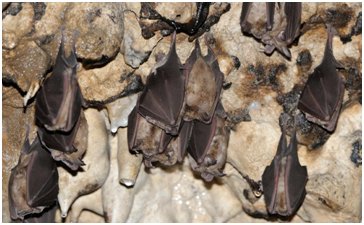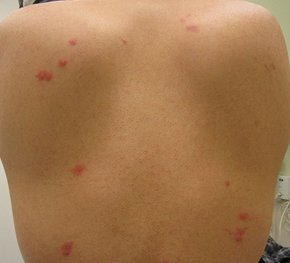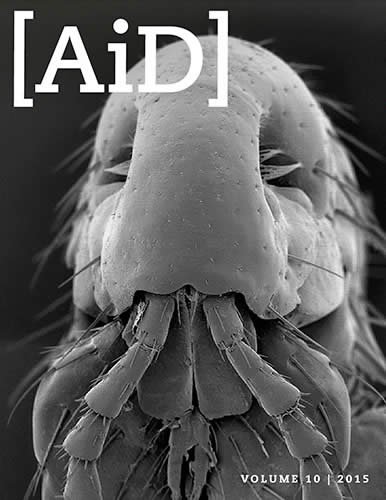
In Bedbugs, Scientists Don’t See a Model of Evolution
News to Know
Abstract
Battling bedbugs from bat-caves to bedrooms—is that evolution?
News Sources:
- The New York Times, “In Bedbugs, Scientists See a Model of Evolution”
- BBC Earth, “Origin of Bed Bugs Revealed”
From the DNA of bat-biting and people-biting bedbugs, researchers from Tulsa to Prague have demonstrated that bedbugs are still bedbugs. In fact, despite their disturbing resurgence in domestic dwellings, bedbugs are showing no sign of becoming anything else, other than more-difficult-to-eradicate bedbugs. Genetic analysis supports the hypothesis that today’s common bedbug originated in bat-caves and, having transitioned to cave-dwelling people, then developed populations with a preference for people and people’s houses. But is that a model for Darwinian evolution?
Darwin’s Darlings?
“For something that is so hated by so many people, it might just be a perfect model organism for evolutionary questions,” says University of Tulsa’s Warren Booth, coauthor of a study in Molecular Ecology.1 Variants of the same species—Cimex lectularius—bite bats and humans.2 Booth’s study demonstrates they do not normally interbreed. Booth says the human-biter is “right on the cusp” of diverging into a new species.
A New York Times journalist—in “In Bedbugs, Scientists See a Model of Evolution”—claims the bedbug shows how Darwinian evolution works. Of course, Darwin held that through natural processes life evolved in all its complexity from simple life-forms through modification and selection. The NYTimes author asserts that the bedbug illustrates Darwin’s conclusion that “from so simple a beginning endless forms most beautiful and most wonderful have been, and are being, evolved.”3
Of Bats and Bedbugs

Did the bedbugs that afflict people get their start by biting bats and moving on to human hosts? Different varieties of Cimex lectularius prefer to feast on the blood of bats and humans today. Image courtesy of NPL/Alamy/BBC.com
Bedbugs are wingless parasites that feast on the blood of warm-blooded hosts. Members of the insect family Cimicidae, cimicids are obligatory parasites in which both adults and larvae depend on their hosts’ blood. A third of these species live on birds, but about two-thirds of the cimicids are associated with bats. In 1913, long before the advent of genetics, it was suggested that bats were the original host species for parasitic bedbugs, which then adapted to live on other hosts.4 This study supports that hypothesis.
Because they depend on their hosts for transportation, individual populations of bedbugs easily become isolated—marooned in a particular person’s habitat. Not that the bedbugs mind. And those best suited to their particular paradise—even when it gets invaded by insecticides—survive to reproduce and pass on the genetically mediated traits that make them most suited to their abode.
By examining the DNA of 756 Cimex lectularius captured from human houses and attic bat roosts across the United States and Europe, teams led by Booth and Ondrĕj Balvín in Prague looked for the relationship between bat-biters and our more familiar nemeses. (They did not examine bat-biting Cimex species from non-human-associated bat roosts for this study.) The researchers also assessed the bugs for the sodium channel genes associated with pesticide resistance.
Bat-biting and human-biting bedbugs look a little different. The people-biting variety have short body hairs and longer, skinnier legs, perhaps less suited for defying gravity by hanging onto bats than for lounging in places where people lounge.5 People-biting bedbugs also are more active at night than bat-biters, apparently adapted to be awake at the times when the chosen hosts are more likely to be asleep and available.6 Evolutionists have even suggested that people co-evolved to retain fine sensitive hairs covering our skin after losing fur to better detect and squash such parasites before they nip.
Booth and Balvín have found genetic footprints suggesting how bedbugs differentiated to produce populations optimized for different hosts. And they noted that human-biting bugs, if fed only bat blood, do not live as long. Bats love to roost in human-built structures—barns, bell towers, lofts, and attics. Bat-biters definitely bite people, but they do not at present seem to establish sustained populations on people unless bats are unavailable (since they much prefer a bat-meal).7 That is small comfort to those whose dwellings are infested with bats and their parasitic companions. Of perhaps more comfort is the discovery that the bat-biting population does not yet possess the genetic markers for insecticide resistance.
The Clan of the Common Bedbug
Comparison of DNA from Cimex lectularius varieties demonstrates that even though they are all of the same species, their lineages have diverged substantially. Booth and Balvín found 14 different lineages (haplotypes) of Cimex lectularius among their bat-biting subjects and 7 different lineages among the human-biters. That all ancestral bedbugs in the species started out their parasitic lifestyle on bats is suggested by the marked biodiversity of the bat-bugs, compared to the very limited diversity among the human-biters. Thus, once the varieties diverged, they apparently followed very different paths.
That their genomes display far less diversity than their bat-biting cousins shows they have lost genetic information.
The DNA from human-biting bedbugs suggests a lot of inbreeding. Such a “founder effect” occurs when a population descends from a small group of isolated individuals. Genetic diversity is minimized. This “founder effect” is what we would expect if a few ancestral bat-biters sampled available humans where their paths crossed—perhaps in caves—and then reproduced exclusively in the new niches people provided.
In contrast, bats carry their families of freeloaders far and wide, producing a lot of genetic diversity within bat-biting populations.8 But when bat-biting and human-biting bedbug populations live in close proximity, even with overlapping territories as in this study, genetic analysis shows they do not interbreed. And laboratory hybrids have reduced fitness. The authors write, “It appears that C. lectularius parasitizing humans are following an evolutionary trajectory essentially independent of those found to parasitize sympatric bats.”9
Evolutionary Trajectory?
But where is that “evolutionary trajectory” taking bedbugs? From the headline hoopla comparing their course to Darwin’s majestic conclusion in On the Origin of Species, one would think this model shows how organisms acquire genetic information to become something new and more complex. But these bedbugs are doing nothing more than developing into a more exclusively host-specific sort of bedbug. In fact, given that their legs appear less suitable for hanging onto bat bodies, and that they do not live as long if fed only bat blood, it appears they are losing these traits. That their genomes display far less diversity than their bat-biting cousins shows they have lost genetic information, rather than acquiring the tools to become better, badder bugs.
The bedbug does provide a living laboratory to study speciation—which is limited to variation within a created kind—but it does not provide a laboratory to show how new, more complex forms of living things evolve as Darwin poetically and imaginatively asserted.
Bedbugs of the Past
Bedbugs have cohabited with humans for a very long time. Writers of the classical period—Aristotle, Aristophanes, Pliny, Dioscorides, and the author of a 3rd century BC Egyptian papyrus—described these pests. Ground bedbugs were even thought to have medicinal properties!10 But fossilized bedbugs in housing from ancient Egypt’s Tel-el-Amarna prove their presence among Mediterranean people much earlier. The Tel-el-Amarna dig site marks an 18th Dynasty village for housing workmen and royal guards under the pharaohs Aknenaten and Tut’ankhamun, respectively.11 Furthermore, that people’s pains to eliminate bedtime pests stretch way back to the Middle Stone Age is evident from fossilized bedding mats in South Africa’s Subidu Cave, where bedding was repeatedly burned and also mixed with aromatic insect-repelling leaves.

Fossilized bedbugs from dwellings in Tel El-Amarna suggest people have been faced with their nightly visitations for a long time. As the archaeologists who found these fossils wrote, "The Amarna specimens provide the earliest record of an association between man and this ectoparasite." Image courtesy of E. Panagiotakopulu in “Cimex lectularius L., the common bed bug from Pharaonic Egypt.”10

Bedbug bites cause itching and skin irritation. Image courtesy of James Heilman, MD/Wikimedia
Bedbugs are primarily a nuisance and cause a good deal of misery and discomfort, including itching, rashes, and allergic reactions. Unlike malaria-carrying mosquitos, however, they are not known to be vectors for infectious disease.12 Bedbugs were simply an unpleasant fact of life before World War II. They ceased to be a problem in developed nations after the widespread use of DDT in the 1940s and 50s. Unfortunately, they staged a worldwide comeback about 15 years ago. Lurking by day in bedding, in furniture, and in crevices in walls and floors, they emerge at night to feast on the blood of sleepers. “While you sleep at night they are feeding on your blood, you are a meal ticket for them,” says Booth. “That can lead to enormous psychological issues.” Everyone is at risk, and Booth says there are two types of people: “the type that have had bed bugs and the people that will still get them. We're living in a time where they're becoming much more common.”13
About 90% of the bedbugs infesting homes today are resistant to pyrethroid insecticides. However, any reports of rapidly “evolving resistance” are poorly worded. Bedbugs remain bedbugs. They don’t evolve into anything. Those genetically equipped to survive the assault of pesticides have restored their populations with pesticide resistant offspring. This is an example of natural selection (and possibly other mechanisms), as pesticide-resistant individuals selectively survive to breed another day. But neither a bat-to-bedbug trajectory nor the emergence of pesticide resistant populations illustrates the Darwinian evolution of complex forms of life.
Did bedbugs acquire their taste for human blood by moving from bats to humans in long ago caves? Maybe. Human beings have long sought shelter in caves. Some still do. That bedbugs moved onto the beds and bodies of people hanging out in bat-caves is entirely plausible. And populations mooching on the blood of their new companions, separated from their bat-biting cousins, would have passed on their most successful adaptive characteristics to their offspring. They would have produced populations of the bugs best fitted for life in the ecological niches available among humans. The pesky parasite may have thus taken advantage of a new host, but it remained a bedbug.
There is nothing in this research either reminiscent or predictive of the evolution of increasingly complex “new forms” either wonderful or dreadful. Instead, what this research demonstrates is that bedbugs are still bedbugs, varying within their created kind to survive and thrive in a sin-cursed world. And those with the genetic equipment to resist the best we throw at them survive to bite—and reproduce—another day, much to our chagrin but not to our surprise.
Bad Bugs in a Good World?
So why is it that the good world God created in the beginning (Genesis 1:31) is full of blood-sucking insects? The answer lies in the Genesis 3 account of man’s rebellion against God. We know from Genesis 1 that God provided all creatures with vegetation to eat. After Adam sinned, things began to go wrong with the world. We—the sinners of today—still live under the shadow of the Curse, augmented by 6,000 years of problems piled upon problems. Biology affirms this biblical truth: There is good biological evidence that another far more dangerous parasite, the mosquito, was once a harmless creature. (Read about it in “The Genesis of Malaria.”)
Parasites abound in this world gone wrong. God equipped the living things He made in the beginning with a wealth of genetic information and the ability to vary, allowing them to adapt to the world’s many ecological niches. Though some have gone extinct, the ability to vary has sustained countless kinds of organisms, including bedbugs, through 6,000 years of living in a sin-cursed world. Perhaps one aspect of sin’s curse included a withdrawal of some of the barriers that kept organisms from hurting each other. Perhaps mutations deprived some—such as today’s parasites—of the ability to sustain themselves without injury to other living things. But as we infer from Genesis 1 and observe in biology, living things—including bedbugs—only reproduce and vary within their created kinds. Bedbug research actually affirms this scriptural truth rather than lending any support to the bacteria-to-bedbug fallacies of Darwinian evolution.
For More Information:
Footnotes
- Carl Zimmer, “In Bedbugs, Scientists See a Model of Evolution,” The New York Times, February 5, 2015, http://mobile.nytimes.com/2015/02/05/science/in-bedbugs-scientists-see-a-model-of-evolution.html?referrer=&_r=2.
- Other species of bedbugs also parasitize bats, but they are not the subjects of this study.
- Concluding sentence from Darwin’s famous book, On the Origin of Species.
- From Horváth G (1913) La distribution géographique des cimicidae et l ́origine des punaises des lits, 294–299. In: Joubin L. (ed.): Éxtrait du IXe Congres International de Zoologie. 25–30 March, Monaco.
- You can compare photographs of the bat- and human-biting varieties of Cimex lectularius at http://www.badbedbugs.com/bat-bugs/.
- W. Booth and O. Balvín et al., “Host Association Drives Genetic Divergence in the Bed Bug, Cimex lectularius” Molecular Ecology (2015), doi: 10.1111/mec.13086.
- http://www.ext.colostate.edu/pubs/insect/05574.html
- W. Booth and O. Balvín et al., “Host Association Drives Genetic Divergence . . . .”
- Ibid.
- E. Panagiotakopulu and P. Buckland, “Cimex lectularius L., the common bed bug from Pharaonic Egypt,” Antiquity 73 (1999): 908–11. According to Pliny’s Natural history (XXIX.61, 62, 63) and Dioscorides' De Materia Medica (II.34; II.113, 125), ground bedbugs were “ground together with other substances against a variety of diseases."
- It is difficult to distinguish the pigeon-infesting species Cimex columbarius from the human-biting bedbug Cimex lectularius from fossils, but these fossils were found in human dwellings, and the pigeon-infesting species isn’t found in Africa. Therefore, archaeologists believe the Cimex fossils they found to be our common bedbug, Cimex lectularius. From E. Panagiotakopulu and P. Buckland, “Cimex lectularius L. . . .”
- While bedbugs theoretically could transmit blood-borne diseases between humans, there is as yet no clear evidence that they do. For more information, see the review: P. Delaunay et al., “Bedbugs and Infectious Diseases,” Clinical Infectious Diseases 52, no. 2 (2011): 200–210, doi: 10.1093/cid/ciq102.
- Melissa Hogenboom, “Origin of Bed Bugs Revealed,” BBC Earth, accessed February 13, 2015, http://www.bbc.com/earth/story/20150130-origin-of-bed-bugs-revealed.
Recommended Resources

Answers in Genesis is an apologetics ministry, dedicated to helping Christians defend their faith and proclaim the good news of Jesus Christ.
- Customer Service 800.778.3390
- Available Monday–Friday | 9 AM–5 PM ET
- © 2025 Answers in Genesis


